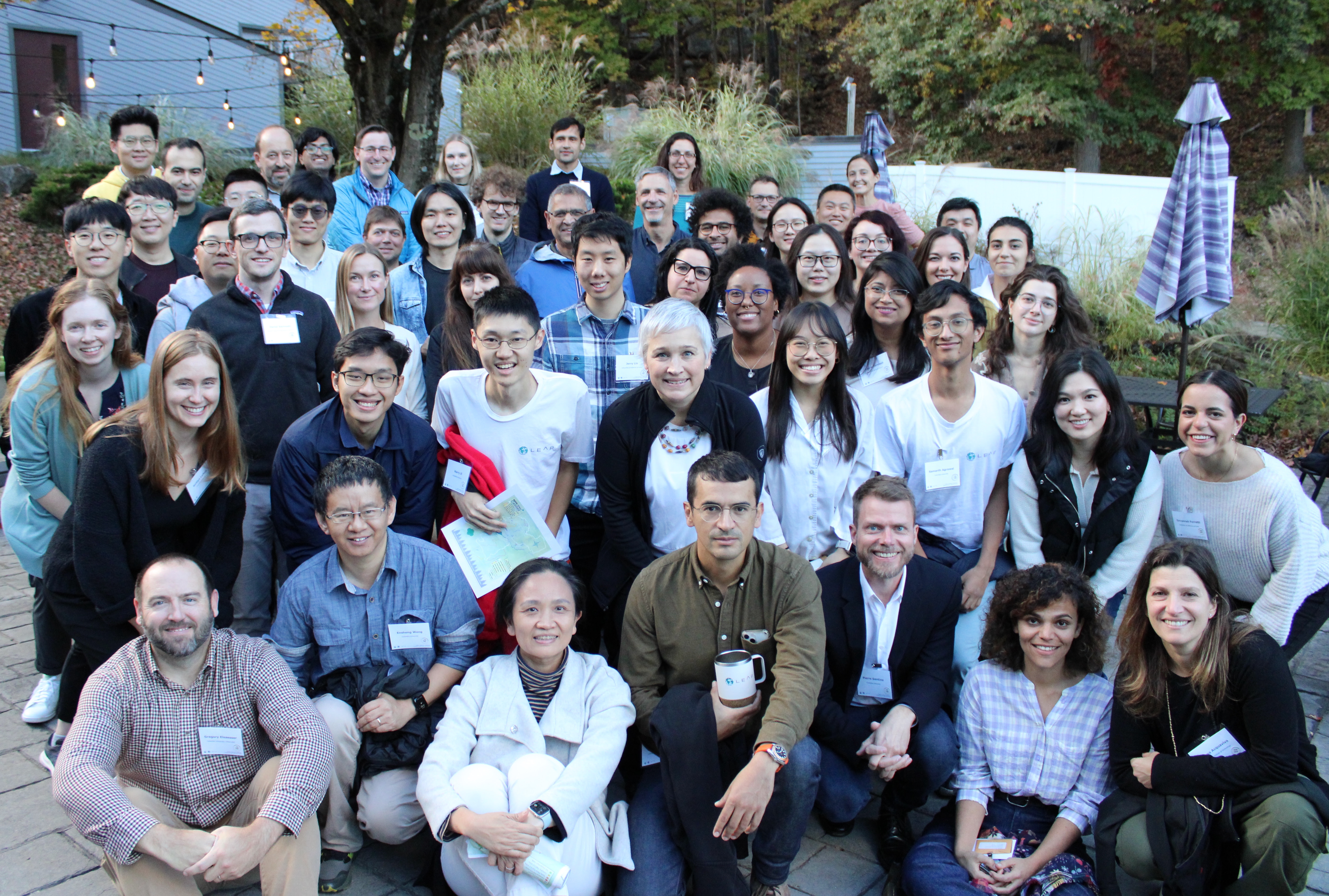Christina Torres, Center for Sustainable Futures Coordinator and Research Associate, attended this year's LEAP meeting. In an interview, she told us more about LEAP, how climate change education fit into what was discussed and what her main takeaways were.
Tell us a bit more about LEAP and the work they are doing?
Learning the Earth with Artificial Intelligence and Physics (LEAP) is a National Science Foundation (NSF) Science and Technology Center (STC) that started back in 2021. While their main goal is to improve climate projections, minimizing the uncertainty in near term climate models, another goal they have is ideating more effective ways to communicate climate science. This "knowledge transfer" arm of LEAP includes formal and informal education initiatives. The partnership between our Center for Sustainable Futures at Teachers College and LEAP is a cornerstone of this initiative. Over the next five years we'll host NYCPS teachers in a Summer Institute, figuring out innovative ways to teach K-12 educators how to use climate data in their teaching and empower students through climate action.
What did you present at the annual meeting? What else did you do there?
In Summer 2023 we had the first iteration of the Summer Institute, where we used climate science, investigation, and action to engage 40 elementary school teachers in climate change education. I presented a five minute lightning talk and poster on the structure of the program, and positive feedback we received. Our main pre/post findings are that our participants are more convinced that climate change is not caused by natural processes after the Summer Institute. 94% of teachers strongly agreed "The Summer Institute will improve my ability to educate and empower my students. Our participants also viewed sessions about the science of climate change (Dr. Jason Smerdon, Columbia Climate School), the practice of climate science, and sessions about the social aspects of climate change (Dr. Courtney Cogburn, LEAP) as especially impactful.
I also spoke on a mentor panel with LEAP scientists that mentored Natinonal Science Foundation - Research Experiences for Undergraduate (NSF-REU) students about the biggest takeaways from our projects this summer. The LEAP meeting allowed me to network with other LEAP PhD students, learn about the different types of climate science being researched at LEAP, and understand how the different projects at LEAP are connected.
Who was in the room and what was the main thrust of the conversation?
The LEAP annual meeting brought together graduate students, postdocs, faculty, and researchers across the STEM spectrum. I was most impressed with the diversity of expertise and it was great to use my own work in both ecology and education to think about larger questions around what does it mean to communicate science to diverse groups. The goal of the two days was to provide space for all the research groups to present their progress, get feedback from the LEAP community, and look forward to what we want to accomplish next year.
How is the role of education considered, both practically and theoretically, as part of the board meeting? Where is education positioned in the intersection of climate and data science?
Education is part of the knowledge transfer arm of LEAP, and I would say took up a solid third of all the conversations we had at the annual meeting. Pierre Gentine, director of LEAP, plainly stated during his talk that the climate science conducted at LEAP means very little if it's not making a positive impact in communities outside of science. Considering the urgency of the climate crisis, the education of LEAP is considered as important as the hard sciences research. LEAP takes this mission to heart through education internally, hosting workshops for LEAP scientists to better their communication skills to external projects like our Summer Institute.
We know LEAP and the TC Center for Sustainable Futures hosted a summer institute for NYC teachers. How was education considered as part of the conversation?
The Summer Institute is seen as the bridge between climate science and formal K-12 education. We know through our research at CSF that teachers have unique questions for climate scientists, but have little access to have these change making conversations. The Summer Institute not only allowed for that access but provided teachers with tools and workshops to put this newfound knowledge into curricula.
There is a lot of talk these days about the importance of transdisciplinary climate research. What did you make of how the transdisciplinary climate research was embedded in the LEAP board meeting?
I love how spaces like the LEAP annual meeting brought together people like me from Teachers College to collaborate with scientists from institutions across the country. There were other social science experts who also attended this meeting, thinking about how to engage entrepreneurship as a form of climate education, how to collaborate with journalists and museum educators, and how to build bridges between DEI focused non-profits and climate science. This makes LEAP's knowledge transfer programming far reaching and transdiscipline oriented.
What are you leaving the conversation with in terms of how machine learning and education are speaking to each other as it comes to addressing environmental degradation and climate change?
I'm leaving the LEAP annual meeting even more hopeful about the future of collaboration between science and education. I'm excited to use the connections I made at the LEAP meeting to strengthen the ways we can communicate climate data science to teachers and students.
What can we expect the TC Center for Sustainable Futures to be working on next given the takeaways from the LEAP meeting?
The next Summer Institute is coming up soon (July 2024)! We'll be hosting 40 middle school teachers, with the goal of having them create standards aligned lesson plans that they will then pilot in their classrooms. I hope to work with the scientists I met during the LEAP annual meeting to record short videos on their science for teachers, and think of ways we can educate teachers about data science.
